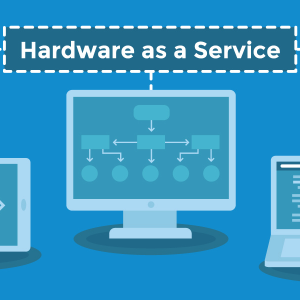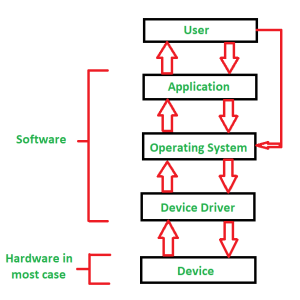
In the world of digital design and electronics, Hardware Description Languages (HDLs) play a crucial role in specifying and simulating the behavior of digital systems. This article delves into what HDLs are, their significance, and the most prominent examples, focusing on hardware description language Verilog and other hardware languages.
What is a Hardware Description Language?

A hardware description language is a specialized type of programming language used to describe the structure and behavior of electronic circuits. Unlike general-purpose programming languages, HDLs are designed to model the hardware at various levels of abstraction, including the structural, behavioral, and register-transfer levels.
These languages enable designers to describe how a piece of hardware should function and interact, facilitating the creation of complex electronic systems, such as microprocessors and communication devices. By using HDLs, engineers can simulate and verify their designs before they are physically manufactured, saving time and resources.
Key Types of Hardware Description Languages
- Verilog: A Prominent HDLOne of the most widely used hardware description languages is Verilog. Developed in the 1980s, Verilog provides a way to describe electronic systems at various levels of abstraction. It is particularly favored for its concise syntax and powerful features, making it a preferred choice for designing complex digital systems.Verilog can be used to model digital circuits at both the RTL (Register Transfer Level) and gate level. This flexibility allows engineers to design and test hardware in a high-level, abstract manner before delving into detailed gate-level designs. Verilog’s extensive library of pre-defined modules and its support for simulation and synthesis make it an invaluable tool in the electronics industry.
- VHDL: Another Key PlayerAlongside Verilog, VHDL (VHSIC Hardware Description Language) is another prominent hardware description language. Developed by the U.S. Department of Defense, VHDL is known for its strong typing and extensive syntax, which allows for detailed and precise hardware descriptions.VHDL is particularly strong in modeling complex systems and is widely used in the aerospace and defense sectors. Its ability to handle intricate designs and its rigorous checking mechanisms make it a robust choice for many hardware engineers.
Comparing Hardware Description Languages

While Verilog and VHDL are the most commonly used HDLs, there are other hardware description languages that cater to specific needs. Each language has its unique syntax and features, making it suitable for different types of projects. For example, while Verilog is praised for its simplicity and ease of use, VHDL offers more rigorous type checking and is often preferred for highly complex designs.
Why Use Hardware Description Languages?
- Design Abstraction and VerificationOne of the primary advantages of using a hardware description language is the ability to work at a high level of abstraction. Engineers can describe complex hardware systems in a more manageable and comprehensible form, allowing for easier verification and testing.By simulating designs in HDL, engineers can identify and rectify potential issues before physical prototypes are created. This proactive approach reduces the risk of costly design errors and accelerates the development process.
- Facilitating Design ReusabilityHDLs promote the reuse of design components, which can significantly enhance productivity. Designers can create modular and reusable blocks of code, which can be adapted and integrated into different projects. This modular approach not only speeds up the design process but also ensures consistency and reliability across various projects.
- Improved CommunicationHDLs facilitate clear and precise communication between different teams involved in the design process. Whether it’s between hardware engineers, software developers, or system architects, having a standardized language to describe hardware functions ensures that everyone is on the same page.
The Role of Hardware Description Language Verilog
Hardware description language Verilog stands out for its versatility and widespread adoption. Its syntax is relatively straightforward, making it accessible for both novice and experienced designers. Verilog supports both behavioral and structural descriptions, allowing for flexible design approaches.
Additionally, Verilog’s compatibility with various synthesis tools and simulation environments enhances its utility in modern digital design workflows. This adaptability has cemented Verilog’s position as a key tool in the development of cutting-edge electronic systems.
Future Trends in Hardware Description Languages

As technology continues to evolve, so do hardware description languages. Advances in digital design tools and methodologies are driving the development of new HDLs and enhancements to existing ones. Future trends may include:
- Increased Integration with High-Level Synthesis Tools: As high-level synthesis (HLS) tools become more sophisticated, they are likely to integrate more seamlessly with HDLs, allowing for more efficient design processes.
- Enhanced Support for Emerging Technologies: HDLs will continue to evolve to support new and emerging technologies, such as quantum computing and advanced AI systems, ensuring that they remain relevant and effective.
- Improved Usability and Accessibility: Ongoing efforts to improve the usability of HDLs will make them more accessible to a broader range of engineers and designers, further expanding their impact across different industries.
Conclusion
Hardware description languages are indispensable tools in the realm of digital design, enabling engineers to describe, simulate, and verify complex electronic systems. Hardware description language Verilog and other HDLs, such as VHDL, play pivotal roles in the development of modern digital technologies. As the field continues to advance, HDLs will remain a cornerstone of hardware design, driving innovation and efficiency in the electronics industry.
If you have any questions for us, you can see more at: https://hardwarepc.xyz/, X




